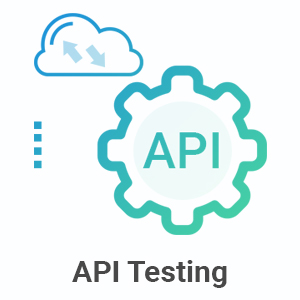


API testing helps examine application business logic. It’s a part of integration testing, and no quality assurance process is complete without it. In simple words, API stands for Application Programming Interface. API acts as an interface between two software applications and allows the two software applications to communicate with each other.
Application Programming Interface (or API) is a set of routines, rules, methods, tools, and protocols used when building mobile applications. In other words, it’s a way for different software components to interact with each other. API reduces development time and provides developers with access to a number of practical features and services.
Routine: a program that performs a particular task. Routine is also known as procedure, function, or subroutine.
Protocols: A format for transmitting data between two systems.
The majority of apps have three layers to them:
Database Layer: where data is extracted from and stored in databases (DB). The client system handles both Presentation and Application layers and the Server system handles the Database layer. It is also known as a client-server application. The communication takes place between the Client and the Server. The client system sends the request to the server system and the server system processes the request and sends back the data to the Client System.
Business Logic Layer: which consists of APIs; its main purposes are data processing between different layers, logical decision making, and application management. Business logic is the programming that manages communication between an end-user interface and a database. The main components of business logic are business rules and workflows.
A Business Logic Layer (BLL) that serves as an intermediary for data exchange between the presentation layer and the DAL. In a real-world application, the BLL should be implemented as a separate Class Library project in the App_Code folder in order to simplify the project structure. below illustrates the architectural relationships among the presentation layer, BLL, and DAL.
Presentation Layer: This represents the user interface (UI), it is also known as the Client layer. The topmost layer of an application. This is the layer we see when we use the software. By using this layer we can access the webpages. The main function of this layer is to communicate with the Application layer. This layer passes the information which is given by the user in terms of keyboard actions, mouse clicks to the Application Layer.
For example, the login page of Gmail where an end-user could see text boxes and buttons to enter user id, password, and to click on sign-in.
Businesses that implement an API-centric architecture, where apps use APIs on the backend to connect with data and services, have increased flexibility and agility to meet increasing customer demands and changing market needs.
API architecture spans the bigger picture of APIs and can be seen from several perspectives: API architecture may refer to the architecture of the complete solution, consisting not only of the API itself but also of an API client such as a mobile app and several other components.
API testing is a type of software testing that involves testing APIs directly and also as a part of integration testing to check whether the API meets expectations in terms of functionality, reliability, performance, and security of an application. In API Testing our main focus will be on a Business logic layer of the software architecture. API testing can be performed on any software system which contains multiple APIs. API testing won’t concentrate on the look and feel of the application. API testing is entirely different from GUI Testing.
UI (User Interface) testing is to test the graphical interface part of the application. Its main focus is to test the look and feel of an application. On the other hand, API testing enables the communication between two different software systems. Its main focus is on the business layer of the application.
API testing typically involves the following practices:
Some of the common tests we perform on APIs are as follows.
We test APIs to improve application test coverage on the Business Logic layer. Testing APIs is important, because whenever they don’t work properly, major issues may occur in application logic, performance, and security.
Basically, on API Testing, we send a request to the API with the known data and we analyze the response.
Some of the challenges we face while doing API testing are as follows
Issues observed when performing API testing are
For more details visit: Connect Click2Cloud:
• Email us – contact@click2cloud.net
• See website – https://www.click2cloud.com/
• Watch our videos : https://www.click2cloud.com/videos-page.php?watch=8
• https://www.click2cloud.com/videos.php
• Past Events: https://www.click2cloud.com/past-events/past-events.php
• Codefest 2021: https://www.click2cloud.com/codefest/
• Read our Blog's – https://www.click2cloud.com/blogs.php
• Follow us on Twitter– https://twitter.com/click2cloudinc
• Find us on LinkedIn – https://www.linkedin.com/company/click2cloud-inc-
• Subscribe on YouTube – https://www.youtube.com/channel/UCjVgly_5QMuNZQh2I2FkHQQ